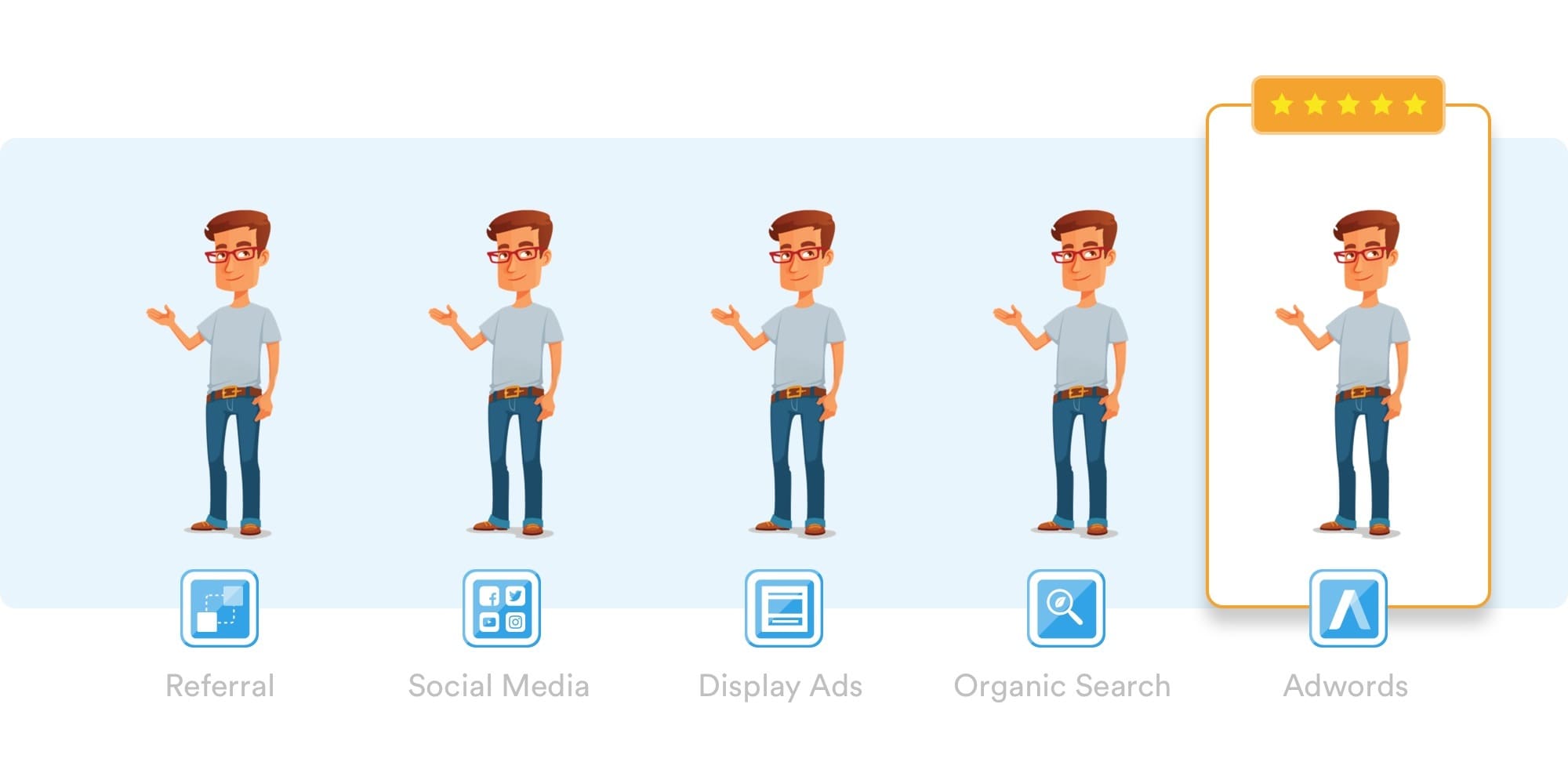Half the money I spend on advertising is wasted; the trouble is I don’t know which half – John Wanamaker (1838-1922), a pioneer in introducing department stores
Advertising efficiency and effectiveness is a subject that has long engaged marketers. The impact of each dollar spent on advertising is measurable and attributable now more than ever, and the advertising is transforming from an art to a pretty exact, quantitative science. The real challenge lies in being able to mine this data accurately and utilise it to drive marketing productivity. Marketing analytics assists in making decisions on the allocation of marketing budgets across different tactics and campaigns
The goal of advertising is to make sure firms reach out to the target audience and engage with them at a reasonable cost, ultimately leading to increased conversions and sales. Budget limitations are a reality, and the key to successful advertising is allocating the advertising spend across different media channels and promotional tactics, both above-the-line and below-the-line advertising.
There are two distinct tools that measure different aspects of the marketing activity, well known to marketers – the Market Mix Modelling and the Multi-touch attribution models. This article discusses how these two different tools measure different types of metrics – efficiency and effectiveness – of marketing activity, and how a unified measure can be built using both these tools, leading to better across-the-funnel marketing outcomes.
Market Mix Modelling
The Marketing Mix Modelling is a gold standard in the marketer’s toolkit for measuring tactic Return on investment. Market Mix modelling (and a limited version of this, media mix modelling) is a mechanism to allocate budgets efficiently across different marketing tactics through exploring historical relationships between business drivers and outcomes such as sales or traffic while accounting for changes in the business environment including competitor price strategies and regulatory changes.
 Many internal and exogenous factors are included in the market mix model – sales, revenue, base sales, ad budgets by media tactic, sale promotions, traffic are some internal factors; competitor price, ad budgets, new store activity, other drivers of sales; population parameters, seasonality and trends could be some exogenous factors that are introduced in the model. The outcome of the market mix model is to determine the impact of spends on various media and promotion activities and to re-allocate spends across these different tactics; at the end of this exercise, the media or tactic with the highest impact on sales (ROI) obtains the largest increase in budgets.
Many internal and exogenous factors are included in the market mix model – sales, revenue, base sales, ad budgets by media tactic, sale promotions, traffic are some internal factors; competitor price, ad budgets, new store activity, other drivers of sales; population parameters, seasonality and trends could be some exogenous factors that are introduced in the model. The outcome of the market mix model is to determine the impact of spends on various media and promotion activities and to re-allocate spends across these different tactics; at the end of this exercise, the media or tactic with the highest impact on sales (ROI) obtains the largest increase in budgets.
MMM models provide a ‘top-down’ view of budget allocation based on long-term data collection and macro-information, leading to a stable and reliable view of how marketing and media tactics’ ROIs change over time. However, while this provides stability to planners, MMM does not address the need for quick insights that are required for dynamic allocations in the digital space.
Enter the Attribution models, which are fine-tuned to make sense of digital assets and tactics which are highly dynamic, have a lifetime of a couple of weeks to some months, and where sales are not the primary outcome.
Attribution models
Attribution models help determine the effectiveness of digital tactics in non-sales conversion activities. Customers pass through multiple digital touchpoints as they move through a funnel of engagement. At the initial phase is the clicking on a campaign and visiting a web page. As engagement levels continually increase there are repeat visits to the website, engagement across different pages, search for new information, and sign up for updates or campaigns. Depending on the site characteristics, they may complete a purchase, ask for specific actions such as callbacks, engage in a chat etc. Guiding customers through the funnel depends completely on the marketers’ skill and design effectiveness- web pages that have links to immediate information, that answers questions and navigate the customer to the right path are likely to be more effective at reaching their end goal of conversions. Broken links, web pages that are not aligned with each other, having to spend a lot of time in searching for key links or in-your-face forceful engagement is likely to put people off, and prospects would simply vote with the mouse to exit the website.
 With a large number of digital touchpoints that a customer traverses, there is a need to identify those tactics that lead to conversion. Each touch or engagement tactic is relevant, but some are more critical than others in the eventual conversion. Multi-touch attribution (MTA) is a tool to measure the critical path of activities that lead to a conversion. This allows marketers to allocate budgets on those digital touchpoints that lead to higher engagement or activity at the ‘top of the funnel’. Attribution models are typically explained with a soccer analogy. There are multiple players in the field and each one has a certain role- the striker is the one who scores (converts), and there are players who assist and pass the ball. How well the team passes and plays on the field determines how they score. The critical path of players that the ball passes through before eventually converting to a goal is the ‘conversion path’.
With a large number of digital touchpoints that a customer traverses, there is a need to identify those tactics that lead to conversion. Each touch or engagement tactic is relevant, but some are more critical than others in the eventual conversion. Multi-touch attribution (MTA) is a tool to measure the critical path of activities that lead to a conversion. This allows marketers to allocate budgets on those digital touchpoints that lead to higher engagement or activity at the ‘top of the funnel’. Attribution models are typically explained with a soccer analogy. There are multiple players in the field and each one has a certain role- the striker is the one who scores (converts), and there are players who assist and pass the ball. How well the team passes and plays on the field determines how they score. The critical path of players that the ball passes through before eventually converting to a goal is the ‘conversion path’.
There are different kinds of attribution models, but the state-of-art is currently the multi-touch attribution where the relative value of each digital touchpoint is ascertained using a model-based approach. Since multi-touch attribution deals with non-sales conversion, it is a measure of effectiveness – how effective is the digital channel in its call to immediate action.
However, neither attribution models nor market mix models individually solve the entire puzzle. While MMM helps optimise spends to achieve a certain revenue, MTA models assist in identifying, in the digital space, the specific set of activities and triggers that lead to conversion. How do marketers bridge these medium-term, high-level insights at the market level to short-term, daily level insights at the customer level?
Unified Models
‘Unified Models’ bridge the gap between the half-yearly or quarterly MMM which utilises offline and online information, and attribution models that are very short term in impact and are solely based on online channels. Unified Models provide visibility across the entire customer decision journey, combining true omnichannel marketing through both online and offline. Marketers can combine the best of MMM and MTA then – identify which messages and digital assets are the most impactful on the consumer level within the broader marketing context, combining both internal and external data.
In terms of impact, Unified models provide both stable estimates that allow for quarterly or half-yearly planning, as well as reasonable insights at a weekly level. By providing real time campaign analysis based on an integrated data view combining both aggregate and individual granularity, Unified Models lead to higher marketing effectiveness and efficiency.


























